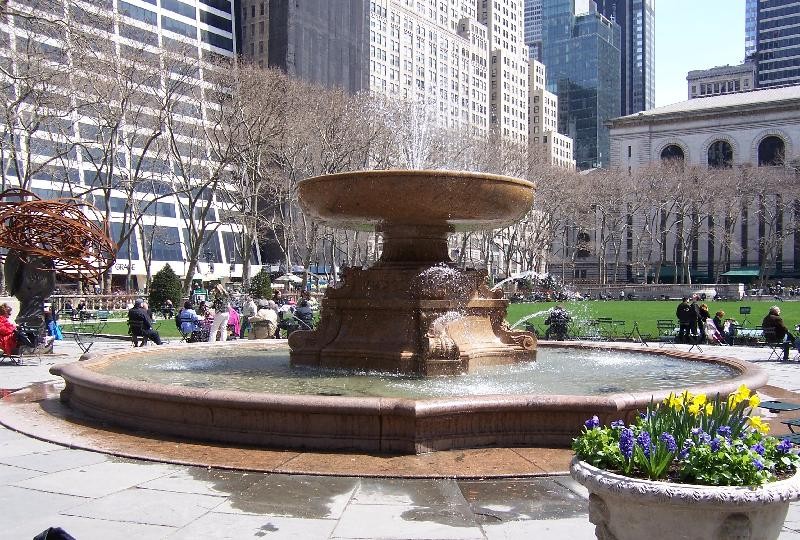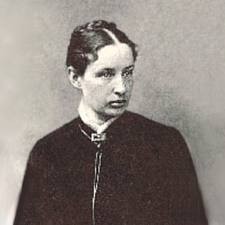Josephine Shaw Lowell Memorial Fountain
Introduction
Text-to-speech Audio
Images
Josephine Shaw Lowell Memorial Fountain

Josephine Shaw Lowell (1843-1905)

Backstory and Context
Text-to-speech Audio
Josephine Shaw Lowell was born Josephine Shaw in West Roxbury, Massachusetts, just outside of Boston, on December 16, 1843. Her parents, Francis George Shaw and Sarah Blake (Sturgis) Shaw, were wealthy Boston abolitionists, who counted among their friends such prominent individuals as poet James Russell Lowell and journalist Margaret Fuller. In 1847, she and her family moved to Staten Island. Four years later, they embarked on a five-year tour of Europe. While living in Europe, she attended school in Paris and Rome, and became fluent in a few different languages. When the family returned to the United States in 1856, she completed her schooling in Boston and New York City.
During the Civil War, Josephine Shaw contributed to the Union war effort by joining the Women’s Central Association of Relief, which manufactured, collected, and distributed essential supplies such as bandages, blankets, and socks to Union soldiers. The organization also recruited nurses to work in military hospitals. In July 1863, her brother, Colonel Robert Gould Shaw of the Fifty-Fourth Massachusetts, was killed at the Second Battle of Fort Wagner in Charleston Harbor in South Carolina. A few months later, she married Colonel Charles Lowell of the Second Massachusetts Cavalry, a nephew of James Russell Lowell. The following year, on October 19, Colonel Lowell was wounded at the Battle of Cedar Creek in Virginia. He died from his wounds the following day.
Following the war, Lowell joined the National Freedmen’s Relief Association of New York. In her role with the organization, she traveled down south to inspect schools built for newly-freed enslaved African Americans in Virginia. In 1872, she became involved with the State Charities Aid Association. The group toured almshouses, hospitals, orphanages, and prisons, surveying their conditions and the treatment of the men, women, and children in them. Lowell’s work with the organization caught the attention of government officials and, in 1876, she became the first woman appointed to the New York State Board of Charities. During her time on the New York State Board of Charities, which lasted until 1889, she continued to tour public institutions and report her findings. Lowell’s efforts led to the creation of the Custodial Asylum for Feeble-Minded Women of Child-Bearing Age, the first of its kind in the nation, in Newark, New York in 1878. She also played a pivotal role in the founding of the House of Refuge for Women in Hudson, New York, a vocational rehabilitation center for female convicts, in 1886. Four years earlier, Lowell founded the New York Charity Organization, which fostered cooperation between charity groups in the city. She would lead the organization for twenty-five years.
In the last two decades of her life, Lowell turned her attention to the labor and anti-imperialism movements. In 1890, she helped to found the Consumers’ League of New York, which encouraged consumers to buy products made only by companies that did not exploit their workers, especially their female employees. She would serve as the organization’s president from 1890 to 1896. In addition to supporting workers’ rights, Lowell opposed the imperialism of the age. In 1898, Lowell spoke out strongly against the Spanish-American War and the resulting acquisition of Puerto Rico, Guam, and the Philippines by the United States. She died in New York City on October 12, 1905.
Shortly after Lowell’s death, a committee formed with the intent of erecting a memorial in her honor. The committee hired architect Charles Adams Platt to design the memorial, a large ornamental pink granite fountain. Committee members initially hoped to place it in Corlears Hook Park on the Lower East Side of Manhattan, near where Lowell focused much of her attention during her career. Instead, the memorial was placed at the eastern end of Bryant Park and dedicated on May 21, 1912. About two and a half decades later, in 1936, the fountain was moved to the western end of the park, where it remains today. It is believed to be the first public memorial in New York City dedicated to a woman.
Cite This Entry
Trowbridge, David J. et. al. "Josephine Shaw Lowell Memorial Fountain." Clio: Your Guide to History. December 20, 2020. Accessed August 14, 2025. https://theclio.com/entry/21864/tour/11/reverse
Sources
"Josephine Shaw Lowell." Encyclopaedia Britannica. Web. 17 December 2020 <https://www.britannica.com/biography/Josephine-Shaw-Lowell>.
"Josephine Shaw Lowell." New York City Department of Parks and Recreation. The City of New York. Web. 17 December 2020 <https://www.nycgovparks.org/parks/bryant-park/monuments/944>.
"Monuments." Bryant Park. Bryant Park Corporation. Web. 17 December 2020 <https://bryantpark.org/blog/monuments>.
Rappaport, Helen. Encyclopedia of Women Social Reformers. Vol. 1. Santa Barbara, CA: ABC-CLIO, 2001.
https://livingnewdeal.org/projects/bryant-park-shaw-lowell-fountain-restoration-new-york-ny/
https://socialwelfare.library.vcu.edu/organizations/state-institutions/lowell-josephine-shaw-3/

